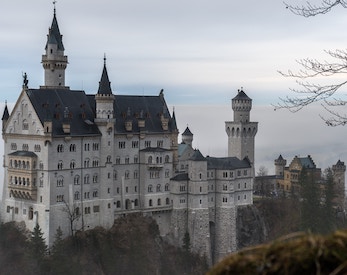
My curated list of children's authors















Published on 28 September 2023 by Andrew Owen (5 minutes)
This week I presented a talk on CMS, CCMS and related solutions at the TCUK23 technical communications conference in England. I had intended to write up my other idea for a talk as this week’s article. But while I was hanging out with my tribe (writers), some of us got talking about our favorite children’s authors. And I promised I’d share my list of recommendations.
As popular as the curated lists are, I do try to keep the blog focused on DevRel topics (although I am keeping that under review). But I think story telling is an important tool for any communicator. There are particular challenges in writing for children, and I think all writers can learn something from reading these authors.
Barbara Anthony flipped her first and last names to create her pen name. I read her book “The Ghosts” in the school libary and while I forgot the title and the author, the story stayed with me. The details suddenly came back to me in a Proustian moment some thirty years later. Filmed twice as “The Amazing Mr Blunden”, the book was reissued under that title in 2021.
Cooper’s grandmother lived in Aberdyfil, and the five book Dark is Rising Sequence is partially set in Wales and incorporates Welsh mythology. In the year of their publication, two of the sequence were named best English-langauge book with an authentic Welsh background by the Welsh Books Council. After my father read me “The Hobbit” and “The Lord of the Rings” (twice), I developed a thirst for fantasy literature and Cooper did not disappoint.
Philip Pullman, author of the “His Dark Matrials” trilogy (who would have had his own entry in this list if I had been born later) said of him:
Garner is indisputably the great originator, the most important British writer of fantasy since Tolkien, and in many respects better than Tolkien, because deeper and more truthful.
In “The Owl Service”, Garner drew on the Welsh myth of Blodeuwedd, a woman created from flowers by Math, king of Gwynedd, and magical trickster Gwydion for a man cursed to take no human wife.
I distinctly remmber being read a book about an orphaned boy who is sent to stay in castle where they teach witchcraft. In this reality, there is a British government depratment responsible for supervising the use of magic. The book was “Charmed Life” and it was published in 1977. I think I know someone else about my age who had a similar experience. This would be the first of the Chrestomanci series which used the multiverse concept long before it became fashionable.
The artist, aviator, journalist, poet and writer’s most succesful work was “The Little Prince”. The novella is styled as a children’s book, particuarly in the simple but beautiful watercolor illustrations he painted for it. But it’s a philsophical work dealing with the nature of existence. However, I don’t see why children should be shielded from discussions about the nature of existence. And it has much to say on the folly of adults.
Mainly writing historical children’s fiction, Sutcliff drew on Celtic and Saxon legends. But she is best remembered for “The Eagle of the Ninth”. It imagines the fate of the ninth Spanish legion of the imperial Roman army that existed in real life but disappeared at some time between 120 to 197 CE. The book draws on what remains a plausible theory, that the legion was wiped out in battle in Britain. Since publication it has been serialized for radio and televion and adapted for film.
E.B. White is probably best known for “Charlotte’s Web” and “Stuart Little”. It’s the former that I remember the most vividly, in part because a friend of mine at tertiary college named her daughter Charlotte after the book. But he is also the White in Strunk & White’s “Elements of Style”, which Geoffrey Pullum referred to in 2009 as “50 Years of Stupid Grammar Advice”. For his contribution to children’s literature, I forgive White. Strunk’s son Oliver became a renowned musicologist, so I suppose I can forgive him too.
Regardless of whatever else is going on in my life, I try (with varying degrees of success) to read to my son every night. As a result I probably read more children’s literature than any other kind of book. To round out the list, these are the authors who have made the biggest impression on me.
Blume is best known for “Are You There God? It’s Me, Margaret”, which has just been adapted into a movie by writer director Kelly Fremont Craig. Blume was a pioneer in tackling taboo subjects in young adult fiction which has made her one of the most challenged authors according to the American Library Assocaition (ALA). This year she was named one of Time magazine’s 100 most influential people in the world.
Best known for his syndicated comic strip “Pearls Before Swine”, the former lawyer is also the creator of the “Timmy Failure” series. Eleven-year old Timmy lives with his mother and a polar bear called Total; his accountant and business partner in a detective agency. His motto is “greatness”, but from the subtitle of the first book (“Mistakes Were Made”) should give you an idea of what to expect. The books are much better than the film adaptation.
Because of his attention deficit hyperactivity disorder (ADHD) and dyslexia, Pilkey’s school teachers made him sit in the hall every day. Which is where he invented “Captain Underpants”. 80 million copies in print worldwide. Translated into more than 28 languages. A DreamWorks movie. A Netflix animated series. And now he too tops the ALA’s challenged authors list. But he’s also proof that you can make a very public error of judgement without being canceled if you’re willing to own it.